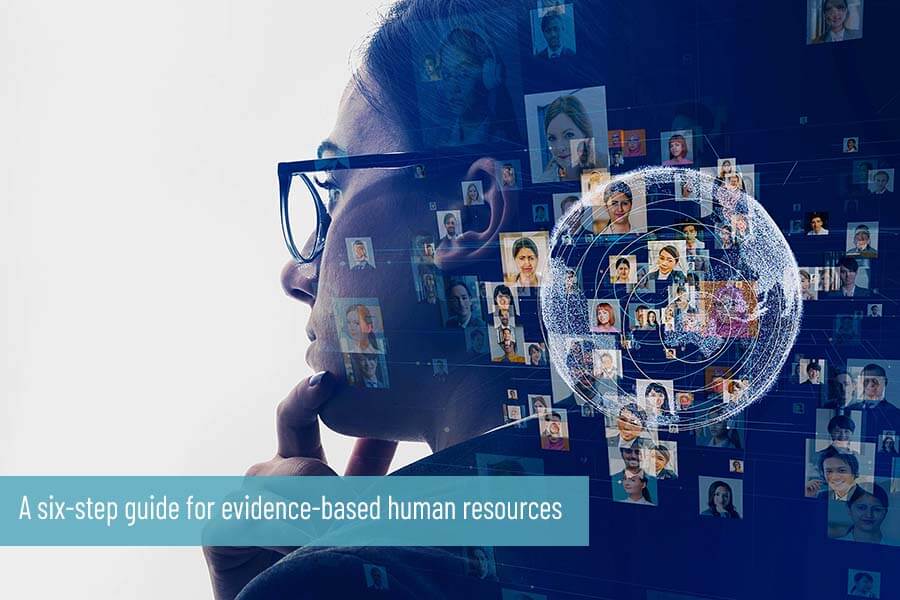Evidence-based human resources (HR) uses data, analysis, and research to understand the connection between people management practices and business outcomes, such as profitability, productivity, customer satisfaction, and quality. Experts from KPMG provide a step-by-step guide on how companies can put this approach into practice.
Identify a business challenge
The first step is to identify a business challenge, for example, measuring productivity of remote employees.
Develop your hypothesis
The next step is to identify the hypothesis. For example, traditional measures of productivity are based on “old world” models of presence and participation; there could be a new model of productivity based on mindset, formal virtual collaboration processes, and engagement through the freedom to choose work patterns. HR and senior leaders can then work together to formulate the right hypothesis to test.
Understand your data
Identify what data you have and what you need. For example, we have HR and workforce data; we need financial performance and collaboration data from participation on a crowdsourcing platform.
Analyse the data
What is the data telling you? Think about the most engaging way to visualise the analysis so leaders can understand and remember the implications. Key here is that the data must be revealed through stories just as much as with ‘fancy graphics’. The metaphor is the front page of a newspaper and the aim is to ensure executives ‘feel’ the insights at an emotional level just as much as they may comprehend them intellectually. This is genuine ‘data artistry’.


